In the article you will find out what diseases are the bees and how to treat them.
Content
- How to determine the disease of bees - methods, a device for determining the diseases of bees: what is how it is, how to use?
- Non -controversial diseases of bees from breeding disorders: name, list, symptoms, causes, treatment
- Video: Bee diseases and their signs
- Dangerous, viral, infectious diseases of bees caused by the protozoa: names, list, symptoms, causes, treatment
- Bee disease - nosematosis: causes, symptoms, treatment, prevention
- How to treat bees from the disease by nosematosis of wormwood?
- Video: a decoction of bitter wormwood, preventive processing of bees from nosematosis
- Bee Diseases - Palesiel: causes, symptoms, treatment, prevention
- Bee disease - tick: causes, symptoms, treatment, prevention
- Video: Tick Varroa
- Bee Diseases - Varroatosis: causes, symptoms, treatment, prevention
- BIPIN - from what diseases in bees, how to use?
- Bee Diseases - Acarapidosis: causes, symptoms, treatment, prevention
- Bee's disease - stone brood: causes, symptoms, treatment, prevention
- Bee's disease - ascospherosis: causes, symptoms, treatment, prevention
- Garlic against bees diseases: Method of application
- Video: Garlic for bees
- Bee disease - black disease: causes, symptoms, treatment, prevention
- Bee diseases during wintering: causes, symptoms, treatment, prevention
- Bees cannot fly: what is the name of the disease, how to treat?
- Diseases of the uterus of bees, and methods of their treatment, medicine
- Pests of bees: Names, methods of treatment
- Plants against diseases and pests of bees: names, list, method of application
- Tincture of bee screens - from what diseases, how to use?
- Video: medicine from bee screens
- Metronidazole - from what diseases of bees, how to use?
- What diseases does the wax mole endure in bees?
- Calendar of bee diseases: photo
- Video: Spring Prevention of Bee Diseases
How to determine the disease of bees - methods, a device for determining the diseases of bees: what is how it is, how to use?
Bees are subject to various diseases: infectious and non -infectious. The cause of non -contemptuous diseases may be a beekeeper, in the case of infectious diseases, it is increasingly complicated. The causative agents of infectious diseases are bacteria, viruses, parasites. If you do not take timely measures, the bee family can weaken and die.
Important: it is not always possible to recognize the disease at its initial stage, often the symptoms appear when the degree of damage to the bee family is high. Therefore, the beekeeper needs to know what diseases are and how to recognize them.
The disease can be determined by observing the behavior and external condition of winged workers. When the bees are on the winter, it is impossible to evaluate their appearance, but you need to know about the condition of the family.
For this, a special listening device is used - a phonondoscope. This is an analogue of a medical device for listening to lungs. In a fon -ending for bees at the end there is a funnel, which is inserted into the summer and thus listen to the buzz of bees. It can tell the beekeeper a lot:
- Quiet hum - the bees are very weak or are located at the rear wall of the hive;
- Intermitted hum-someone wound up in the hive.
- Complete silence - the death of a bee family is possible.
- Dive -voice rumble - the uterus died.
- An even rumble - everything is in order with the family.

Non -controversial diseases of bees from breeding disorders: name, list, symptoms, causes, treatment
Important: in beekeeping reference books you can find more than 100 descriptions of bee diseases. We will consider diseases that are often found in practice.
Non -controversial diseases are not as safe as some might think. If you do not treat bees in time, they can leave the hive, reduce performance, produce poor -quality products or completely die.
To non -disrupted diseases relate:
- Nector toxicosis - poisoning nectar of a poisonous honey plant (tulip, tobacco, milking, saffron).
- Chemical toxicosis - poisoning with therapeutic drugs (tetracycline, streptomycin).
- Alimentary dystrophy is the starvation of bees leading to death. It is necessary to ensure sufficient presence in the hts of honey, perga, sugar syrup.
- Affairs of toxicosis - occurs as a result of nutrition of bees with padding honey. Such honey must be disposed of.
These diseases are associated with impaired bees feeding. There are also non -neural diseases associated with violation of the conditions of detention:
- Old age of the uterus and extinction of the hive;
- Bee warehouse;
- Frozen brood.
In order to avoid infection of bees with non -neopsy diseases, the beekeeper must properly feed, care, provide good honey plants and conduct audits of bee family.

Video: Bee diseases and their signs
Dangerous, viral, infectious diseases of bees caused by the protozoa: names, list, symptoms, causes, treatment
Important: invasion diseases are diseases caused by unicellular (simple) and multicellular organisms.
Such diseases include:
- Amoebiosis - damage to the vascular system of bees;
- Browellosis - eating uterine feed by an insect of the brival;
- Varroatosis - damage by a tick Varroa;
- Nosematosis is a disease of the intestines of bees.
These diseases are transmitted from healthy bees to patients. The reasons for the development of diseases are the antisanitarian conditions of the content of bee family, weak families, the lack of medical and preventive measures.
Treatment of invasive diseases consists in conducting sanitary-preventive treatment of bees and hives with special healing drugs, destroying and preventing parasite development.

Bee disease - nosematosis: causes, symptoms, treatment, prevention
Important: the main symptom of nosematosis is the bowel movements of the bee, the traces of which can be seen on the walls of the hive.
Nosematosis occurs due to severe weakening of bee family, in most cases occurs at the end of winter. In addition to the diarrhea, bees, there is a strong subsurface. The abdomen in the sick bee is increased, the bee is sluggish, it cannot resist the honeycombs, the wings tremble.
To establish a diagnosis, nosematosis is handed over to the laboratory. If the result was confirmed, the bees are treated with Fumagillin, as well as the cleaning and disinfection of the hive.
The prevention of nosematosis is the following procedures:
- Insulation of hives for wintering;
- High -quality feed reserves (honey, peg);
- Good brood, the presence of young individuals in the hive.

How to treat bees from the disease by nosematosis of wormwood?
Wormwood grass helps well with nosematosis. Beekeepers often prefer bitter wormwood, it is not inferior to Fumagillin to its therapeutic effect.
Water infusion recipe for wormwood:
- Grind 10 g (or 2 tbsp) wormwood and pour it into an enameled pan.
- Pour grass 1 tbsp. boiling water and hold in a water bath for 20 minutes.
- Insist the solution for 40 minutes, then strain the decoction.
Recipe for alcohol infusion of wormwood:
- Place the crushed wormwood to half the volume in the bottle.
- Fill a bottle to the edges of 40 ° vodka.
- Hold the infusion for 3 days.
Water or alcohol infusion is added to sugar syrup for feeding 60 ml of water infusion per 1 liter of syrup, 15 ml of alcohol infusion per 0.5 l of syrup.
Video: a decoction of bitter wormwood, preventive processing of bees from nosematosis
Bee Diseases - Palesiel: causes, symptoms, treatment, prevention
IMPORTANT: PARGENTERS - an infectious disease of bees that affects the brood.
In addition to a pararanetz, there are two more variations in the defeat of the brood: European and American rot. These diseases can lead to complete death of brood and, as a result, extinction of bee -family.
The source of infection is the hive bees that clean the hive and feed the larvae. A sign of the disease is dead honeycomb larvae. They can be determined by a characteristic smell, crust and brown color.
Treatment consists in isolating healthy bees in disinfected hives. They are fed with tetracycline food. It is also recommended to replace the uterus.
For the prevention of pararanetz, it is necessary to carry out timely sanitary processing of the hives, increase strong, resistant to the winter of the family.

Bee disease - tick: causes, symptoms, treatment, prevention
Important: one of the most complex and dangerous parasite of bees is the tick Varroa. It is difficult to notice at once. The presence of ticks becomes noticeable when the bees are depleted, weakened.
Barroa tick is a parasite that is absorbed between the segments of the bee's abdomen. Infection comes from other infected bees, often the fluids of the disease are liver bees. A lot of Varroa's ticks lives in drones, and ticks are also found in large quantities in brood.
Tick \u200b\u200bdamage is caused by Varroatosis, which is a deadly disease. In the end result, if you do not treat the disease, the bees will begin to die, and the apiary will die.

For the treatment of Varroatosis, beekeepers have a whole arsenal of ways:
- Folk treatment;
- Thermal treatment;
- Treatment with various drugs.
Several times a year, sanitization of bees and hives is carried out. Conduct the prevention of the disease is prudent than then treat bees.
Video: Tick Varroa
Bee Diseases - Varroatosis: causes, symptoms, treatment, prevention
AT previous article We considered various methods of prevention of Varroatosis. For the prevention and treatment of the disease, these methods are used:
- Processing of bees ants, oxavere and lactic acids;
- Processing of bees with a folk remedy - celandine;
- The heat treatment of bees is a reliable but laborious way;
- Bees processing by bipin.
If a varroatosis disease has been found, it is appropriate to carry out comprehensive treatment. The parasite quickly produces immunity to drugs, which complicates the struggle with it. Preparations to combat Varroatosis:
- Folbeks
- Phenotiazin
- Varroatath
- Akarasan
- Apigel
- Bisanar
- Essential fir oil
- Cleaned sulfur
Having bought any drug, be sure to adhere to the instructions. Strict observance of the dosage of the medicine will help to get rid of the tick and not harm bees.

BIPIN - from what diseases in bees, how to use?
The drug Bipin is successfully used to treat bees from Varroatosis. The drug is an acaricide of local action, it does not harm the bees of their products.
Important: the prepared solution must be used within a day, if for some reason the processing did not work, the solution is poured.
Bipin does not lead to the death of the uterus and brood, does not weaken bee families.
After primary treatment, the drug destroys up to 95% of ticks. It is recommended to carry out 2 treatments for complete getting rid of the disease.
It is necessary to dilute the drug according to the instructions, then the effect will be positive. Below is the table of the correct dosage of the bipin.

Bee Diseases - Acarapidosis: causes, symptoms, treatment, prevention
Important: on the body of a bee, in addition to the tick, Varroa can parasitize a tracheal tick.
Akaratis Wood mites have very small sizes, they multiply in the trachea of \u200b\u200bbees, make it difficult to breathe and lead to death. The damage to the tract with this tick is called acarapidosis. Tracheal ticks affect young bees, often the infection joins with Varroatosis.
Symptoms of a tracheal tick: weak bees crawling on the ground near the hive. But this symptom also refers to the number of other infectious diseases. To clarify the diagnosis, the bee is sent to the laboratory, there under a microscope, a chest trache is checked.
For the treatment of acarapidosis, the same drugs are used as in the treatment of varroatosis.

Bee's disease - stone brood: causes, symptoms, treatment, prevention
Important: Aspergillosis is called a stone brood. This is a fungal disease leading to drying brood and adult bees.
The reasons for the development of the fungus of Aspergilla are dampness in the hives. For the prevention of the disease, it is not recommended to place the hives in places with high grass, the overgrown grass needs to be mowed. Also, the location of the hives on low stands and in the lowlands should not be allowed.
If the disease progresses, it is necessary to carry out treatment with such drugs:
- Unisan
- Apiask
- Ascvet
- Ascosan
When working with bees, patients aspergillosis, it is necessary to protect the eyes with glasses, and the face with a gauze with a damp bandage.
Bee's disease - ascospherosis: causes, symptoms, treatment, prevention
Important: Askosferosis provokes a moldy fungus of ascosphere Apis. The disease is manifested most often in the spring, affects weak families during wintering.
The symptom of ascospherosis is a dead brood. Larvae die in the cocoon stage, they look black or white lumps, become dry and dense. On this basis, you can determine the disease of ascospherosis.
Treatment of ascospherosis provides for the following procedures:
- Removing from the hives of the framework with an infected brood. After the destruction of the brood, the honeycombs are melted on the wax.
- Replacing the uterus of a new one.
- Feeding of the family with the addition of antibiotics (Mikosan, Polisot, Askopol, etc.).
- Processing of bees with folk remedies (celandine, garlic, horsetail).

Garlic against bees diseases: Method of application
Important: garlic is a good prophylactic for the prevention of ascospherosis, varroatosis. So that the taste of garlic does not spoil honey, prevention must be completed to the main honey collection.
Garlic water is prepared from garlic, which is then added to sugar syrup for feeding.
Garlic water recipe:
- Grind 1-2 heads of garlic.
- Add garlic in 1 liter of cold boiled water.
- Add two tablespoons of garlic water to sugar syrup and feed the bees.
You can also use garlic juice. To do this, 10 drops of juice are added in 1 liter of water.
Video: Garlic for bees
Bee disease - black disease: causes, symptoms, treatment, prevention
IMPORTANT: BEAR BEARS OF BEARS CALE PARARLICA, A dangerous viral disease that affects the nervous system of insects.
The reason for the development of paralysis is the virus that is transmitted from sick bees to healthy, as a result of eating infected feed, through general drinkers, through infected inventory.
Symptoms of the disease:
- Changing the color of the bees is black.
- Bee throwing from the hive of black scam.
- The hostility of the bees to each other.
- The loss of hairs from the surface of the bee's body, baldness.
Paralysis prevention:
- Using individual drinkers for each family.
- Prevention of theft in the apiary.
- Processing from the tick of Varroa and other diseases.
- Disinfection of working inventory.
- Getting rid of old honeycombs.
For the treatment of paralysis, folk remedies and drugs are used. One of the best reliable folk remedies is the yarrow. During flowering, the top is torn off the upper part, then the water infusion is made of it and add it to sugar syrup.
Of the drugs, an endoglyukin is used, which has proven itself well in the treatment of black disease in bees.
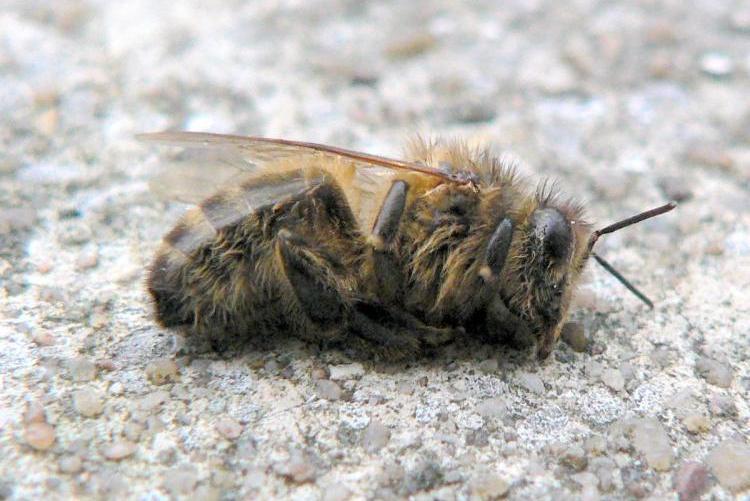
Bee diseases during wintering: causes, symptoms, treatment, prevention
Even in the fall, before the formation of the club, the beekeeper must carry out therapeutic and sanitary-preventive measures so that the bees are not subjected to disease in winter.
Bees are threatened with such diseases during wintering:
- Nosematosis;
- Acarapidosis;
- Wing deformation virus
- Warrotatosis.
The causes of bees diseases in winter can be different. For example, adverse climatic conditions, hunger, uterine loss, weak families, incorrect assembly of a nest and improper ventilation, humidity, noise in a wintering house, bright lighting.
To prevent diseases and the death of bee family, various work is carried out on the organization of wintering of bees. We talked about this in detail in previous article.
Bees cannot fly: what is the name of the disease, how to treat?
Many diseases are similar to symptoms, many of them can only be determined in the laboratory. An experienced beekeeper can determine some diseases independently, by several symptoms.
Important: there are several diseases when the bee cannot take off.
Diseases leading to the loss of the ability to fly:
- Akarapidosis
- Black disease
- Filamentovirosis
- Septicemia
Filamentovirosis is a viral disease that joins if the bee is sick with nosematosis. For treatment, drugs are used:
- Viran
- Polyzin
- Endoglyukin
Septicemia - Bacilla's Belong Blood infection. The bee begins to move slowly, gradually losing the ability to move. The bee can die in just a few hours. The cause of the disease is waste and standing water. Treatment provides for top dressing with tetracycline in a proportion of 300 thousand units per 1 liter of sugar syrup.
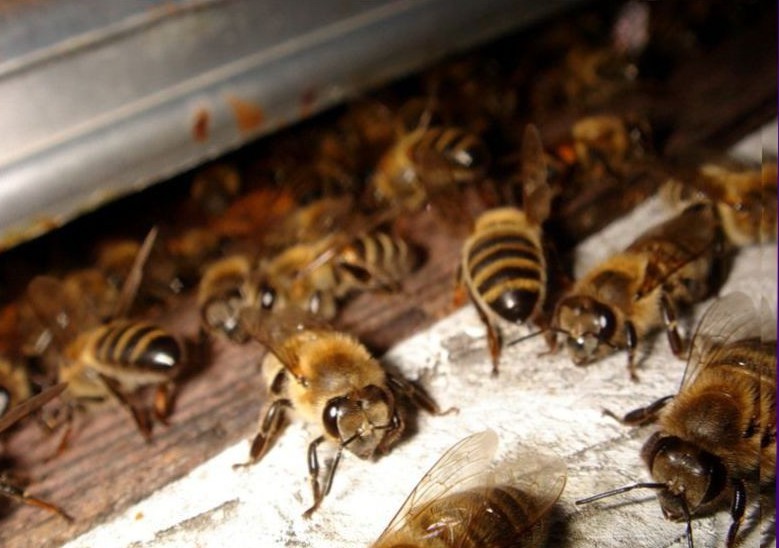
Diseases of the uterus of bees, and methods of their treatment, medicine
Important: the uterus is the main bee in the family. Without it, a bee family cannot exist. In addition to those diseases that infect all other bees in the hive, the uterus can suffer from disorders of the genitals.
Melanosis is a viral disease that affects the propagation organs in the uterus and provokes the cessation of egg masonry. Melanosis can lead to a chin in the uterus. The disease can develop due to mechanical damage to the body of the uterus.
The sore uterus stops laying eggs, becomes sluggish, motionless. Work bees throw such a uterus out of the hive. It makes no sense to put it back - the bees will throw it back again.
Methods for treating melanosis are not developed. Prevention is an improvement in the conditions of bees content, eliminating the paddle honey. Sick queens are replaced with new ones.

Pests of bees: Names, methods of treatment
Important: in addition to the harm to the bees of parasites and insects, there are other types of pests that you need to fight.
There are many pests of bees:
- Mouse, rats
- Hedgehogs
- Lizards
- Bird beekeeper
- Hornets
- Wax moth
- Ants
- Beetle Kozheed
- Spiders
Birds, insects and rodents love to enjoy both honey and bees. Many of them attack at night or when the bees return to the hives in the evening. At this time, the bees are tired and cannot be protected properly.
The task of the beekeeper prevent the attack on bees. To do this, they provide the protection of the hive to be dry there, there were no cracks, there were no moisture, cleanliness reigned. The hives are also conducted, if the pest is detected, they fight with it by destroying or blocking access to bees.
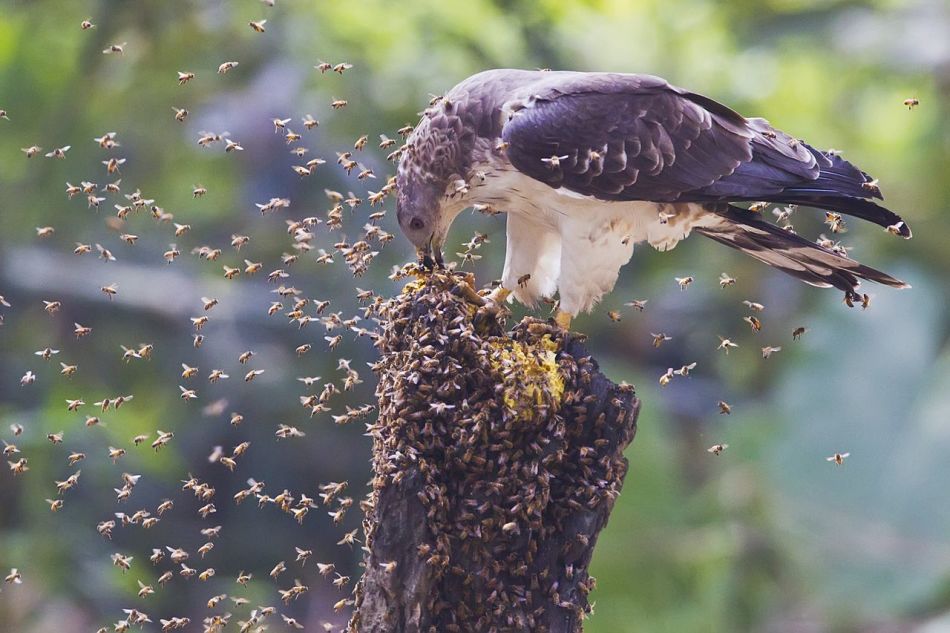
Plants against diseases and pests of bees: names, list, method of application
There are many plants that repel pests of bees:
- Donnik - scares away mice
- Lavender - ants
- Mustard - scare away the aphid
- Kotovnik - weevils
- Garlic - caterpillars, ticks
Such plants help to cope with diseases:
- Sagebrush
- Yarrow
- Fuck root
- Celandine
- Tansy
- Birch leaves
Each type of plant can be used in different ways: make decoctions, put the twigs of plants near the hives, plant apiaries nearby. Each disease and pest has its own methods of struggle.

Tincture of bee screens - from what diseases, how to use?
Important: tincture from bee screens is not used to treat bees. But such a tool can cope with many diseases in humans.
Tincture from bee screenshot helps with such diseases:
- Lambliosis
- Prostatitis
- Diseases of the genitourinary system
- Strengthening the immune system
- Varicose veins
- Joint pain
- Weightloss remedy
- Intestinal inflammation
Bee prying tincture can be prepared on a water or alcohol -based water or alcohol.
Alcohol tincture recipe:
- You will need 1 tbsp. crushed scaffold, 1 tbsp. vodka.
- Pass should be dried in the oven at a temperature of 50*.
- Then pour the root of alcohol in a dark bowl to protect against sunlight.
- Insist the solution for 2 weeks. The first week constantly shake the solution.
- Before use, the tincture is filtered using ordinary gauze.
For the prevention of various diseases, tincture is consumed 20 drops 2-3 times a day before meals. A preventive course is 2 months.
Important: tincture from the scaffold is contraindicated for people with allergies to beekeeping products and children.
Video: medicine from bee screens
Metronidazole - from what diseases of bees, how to use?
Important: metronidazole can be part of drugs for the treatment of nosematosis in bees.
One of these drugs is the “nosemate” that is used in the fight against nosematosis.
Also, metronidazole is part of the drugs "Nosemacid", "Noset", "Nosemapol".
Some beekeepers use metronidazole in its purest form. To do this, one tablet of metronidazole is fed bee -seeds with candidate and sugar syrup.
Many beekeepers speak categorically against metronidazole, preferring folk treatment methods and other drugs.
What diseases does the wax mole endure in bees?
Important: wax moth is a common bee pest. She devours wax, and is also a carrier of a dangerous disease American rot.
The American rotten leads to the death of the family by decaying larvae in the pupation stage.
The wax moth is dangerous in itself: it destroys the cell supply. To combat the pest, folk remedies are used, such as:
- Salt
- Vinegar
- Immortelle
Preparations are also used:
- Thymol
- Ascomoline
- Paradichlorbenzole

Calendar of bee diseases: photo
In order to protect his apiary from diseases and parasites, the beekeeper must regularly carry out bees and hives. Below is a table that will help to navigate in terms of prevention of diseases.
Important: if the disease is detected, you should not wait for the prevention period, it is necessary to take measures at once.

Successful beekeeping is impossible without protecting and combating parasites and diseases. Apiaries, at which preventive measures are not carried out to death.



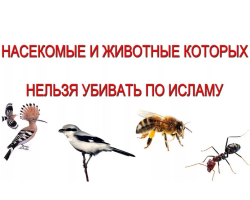
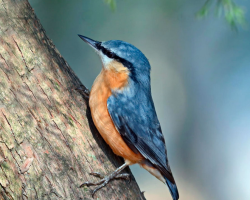



Thank you very useful